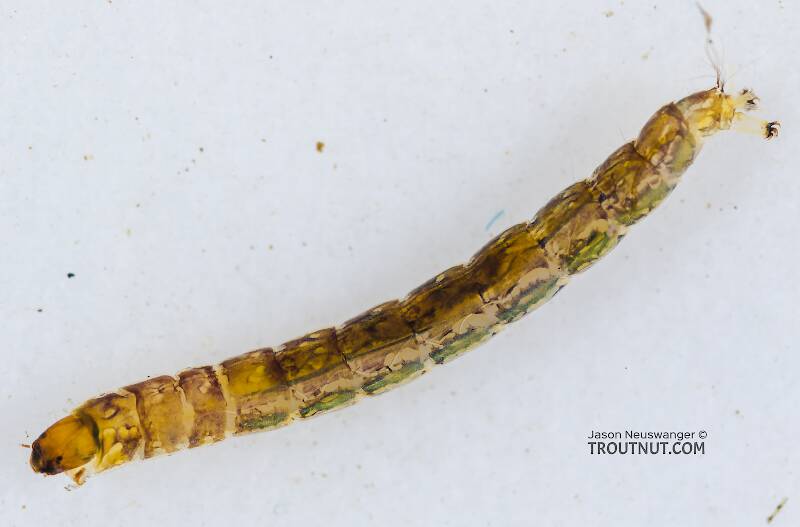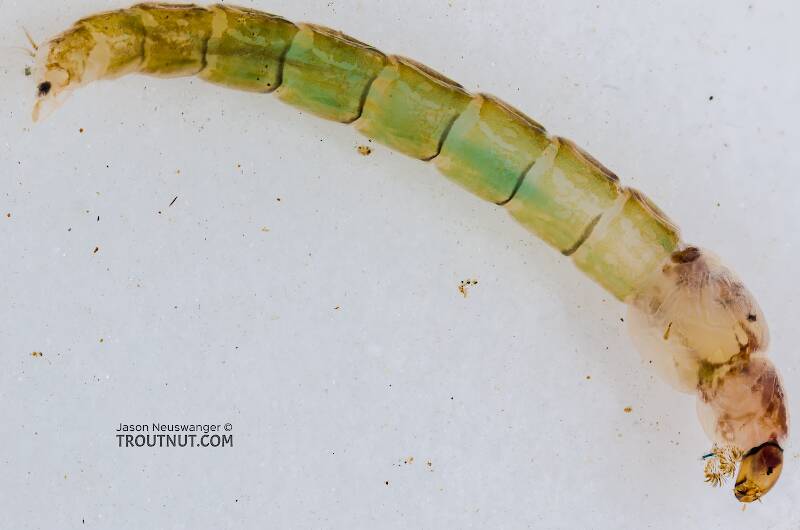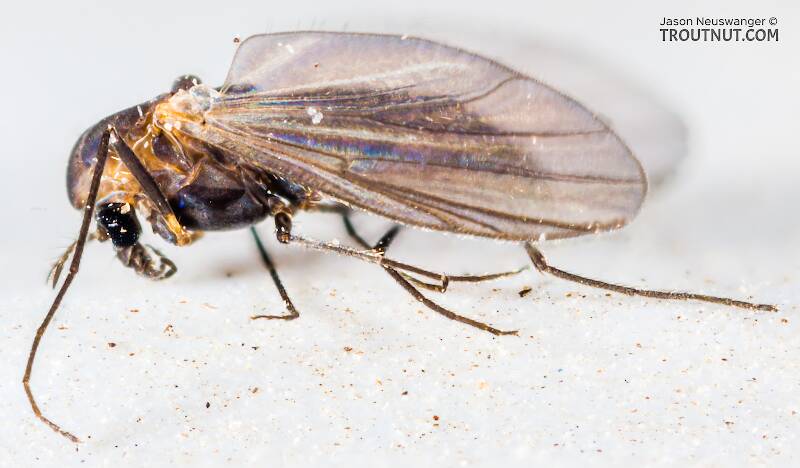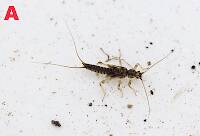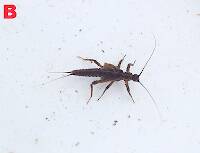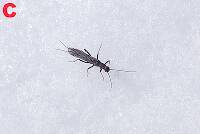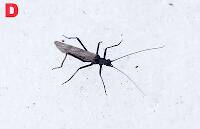
Blue-winged Olives
Baetis
Tiny Baetis mayflies are perhaps the most commonly encountered and imitated by anglers on all American trout streams due to their great abundance, widespread distribution, and trout-friendly emergence habits.
Featured on the forum

Troutnut is a project started in 2003 by salmonid ecologist Jason "Troutnut" Neuswanger to help anglers and
fly tyers unabashedly embrace the entomological side of the sport. Learn more about Troutnut or
support the project for an enhanced experience here.
This topic is about the True Fly Family Chironomidae
Midges are the most important aquatic insects in some places, especially fertile spring creeks where they are extremely abundant and the current is so slow that it's efficient for trout to surface feed on very tiny insects.Some midges are large, up to hook size 14, but the majority are size 22 or smaller. The number of genera and species is hopelessly huge for angler entomologists to ever learn, and the identifing characteristics often require slide-mounting tiny parts under high-powered microscopes. Even the most Latin-minded fisherman must slip back to the basics--size and color--to describe his local midge hatches.
Example specimens
Aznaini
Posts: 1
Posts: 1
Aznaini on Nov 17, 2008November 17th, 2008, 10:18 pm EST
hello friends..nice to meet you in this site...i'll further my study just around a corner..i need your help in sharing some information about Chironomus kiiensis.only a few information i can get about this species. i'll use this species in my future project..glad to here something from all of you..thank you.
Taxon on Nov 17, 2008November 17th, 2008, 11:56 pm EST
Hello, Azniani. Welcome aboard. Chironimus kiiensis appears to be an Asian (Korean) species. Therefore, I kind of doubt that you will be able to learn much about it on this forum. However, if you were to be more specific concerning kind of information you hope to learn about it, perhaps someone here could be of some assistance to you.
Quick Reply
Related Discussions
Topic
Replies
Last Reply
Re: You Western anglers - any experience with the Giant Orange Sedges?
In the Caddisfly Genus Dicosmoecus by Troutnut
In the Caddisfly Genus Dicosmoecus by Troutnut
7
Jan 7, 2009
by Dgracia
by Dgracia
3
May 21, 2008
by Greenwolly
by Greenwolly



